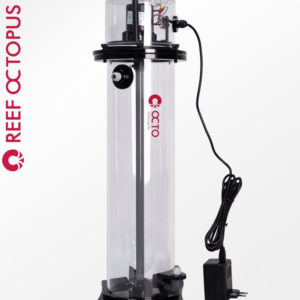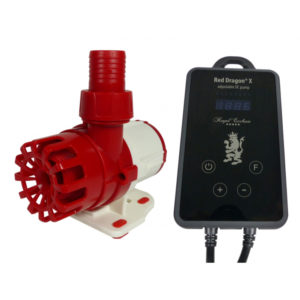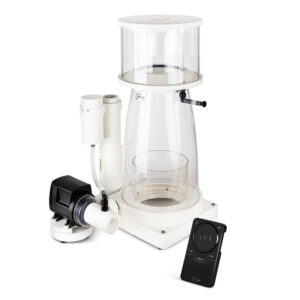Many folks out there use DIY algae reactors for nutrient control and it can certainly be a money saving option. However, there are risks involved. Ok, full disclosure, I do sell Pax Bellum ARID algae reactors and I do use one on my 187 gallon reef tank. Nonetheless, the information I am about to pass along is based on findings from the inventor of the ARID, who spent 13 years developing a patent protected product.
Inner Tube DIY Algae Reactors
So let’s get into the specifics. One type of DIY reactor out there utilizes a plastic tube on the inside of the reactor that houses the LEDs. If this plastic is not actively cooled then there is a good chance it will eventually crack and possibly shatter, which would result in a flood. Additionally, without the cooling, carbonate will precipitate on the light tube, blocking light and requiring acid dipping to remove this stubborn substance. If Pyrex glass is used without cooling then one can expect the same precipitation of carbonate on the glass.
Additionally, glass transmits more heat than most plastics so even more heat will be going into the water, causing this glass apparatus to act just like an aquarium heater. Eventually, high temperatures at the lid could cause the glass tube to shatter. In fact, changes in temperature due to the LEDs being on then off could compromise the light tube, especially at the lid, where room temperature meets heat from the LEDs. The kicker here is that glass light tubes fail abruptly versus plastic so that would equate to an instant flood. Not good.
On the safety front, any type of flood or leak is problematic when electricity is involved so the thought of water coming in contact with LEDs is frightening to say the least.
Chamber Wrapped With LEDs
The other type if DIY reactor is one in which a plastic chamber is wrapped with a LED strip. Carbonate buildup is a problem with these units as well so the entire chamber will need to be cleaned on a regular basis to optimize light transmission. The vigorous cleaning required to remove this stuff will likely produce scratches, impacting light penetration and eventually requiring replacement of the chamber.
Another big problem with this design is that it takes many more LEDs versus a reactor with central illumination to penetrate the chaeto mass. More LEDs equals more heat and a higher probability that cracks will form and the plastic will fail, resulting in leaks and a possible electrical hazard. On top of that, some folks wrap these reactors with tin foil to reflect more light going into the chamber. Talk about heat! You might as well stick the thing in an oven.
So please tread lightly when you contemplate a DIY algae reactor. Floods stink and safety first is certainly important when it comes to you and your animals. If anyone has a different perspective and information to counter the above then please chime in with any comments.
Additional Resources
If you would like some help with a new tank build, including help designing a custom aquarium, or help re-configuring your current setup then you can visit this page for more information. And if you are looking to add some equipment, I do sell GHL, Pax Bellum, Reef Octopus Calcium and Kalk Reactors and Royal Exclusiv products, including Dreamboxes, which is the equipment I use and recommend. I also sell Reef Brite metal halide and LED fixtures as well as Maxspect & IceCap Gyres.
As for additional insights and information, please explore my many other reef tank and SPS related articles as well as my YouTube channel. For an even deeper dive into reef tank care you can check out my Reef Keeping Master Class. This online course is an immersive and one of a kind educational tool designed to help reef aquarium hobbyists build and maintain a beautiful SPS reef tank. The course is a series of video presentations with some supplemental video from my YouTube channel. There are also quizzes to help students retain and understand the information presented in the course.
Need some frags…..I can help with that as well 🙂 Please visit my SPS Frag store to see what is available.











